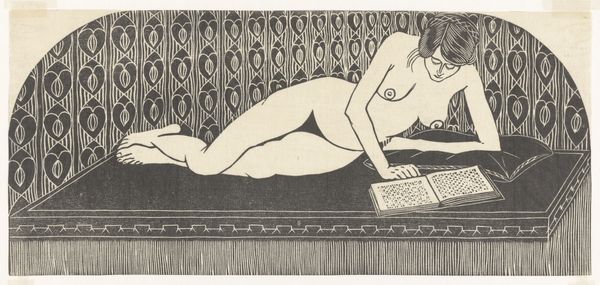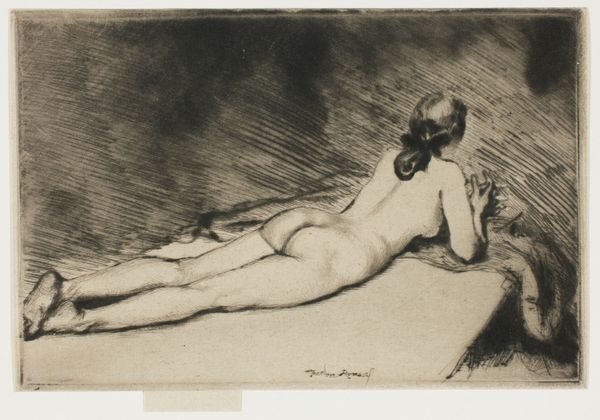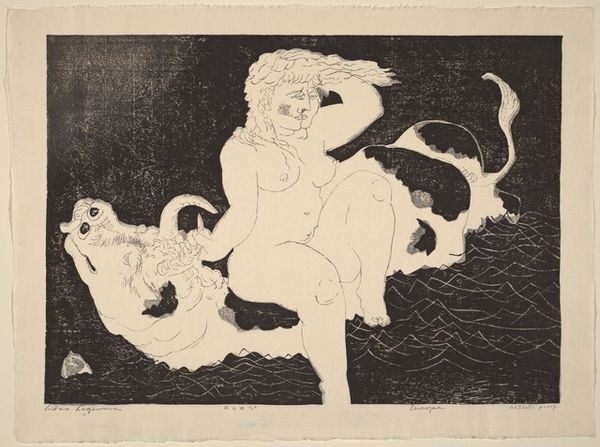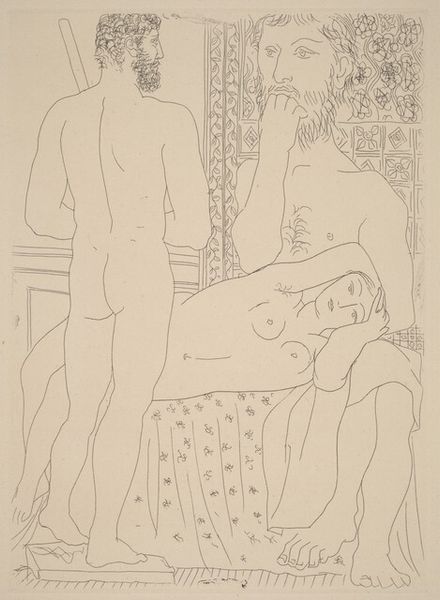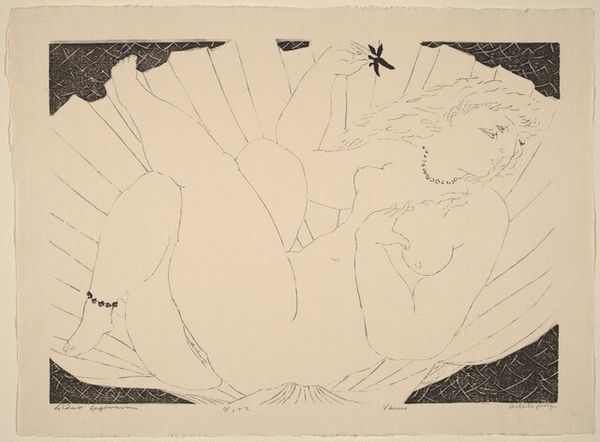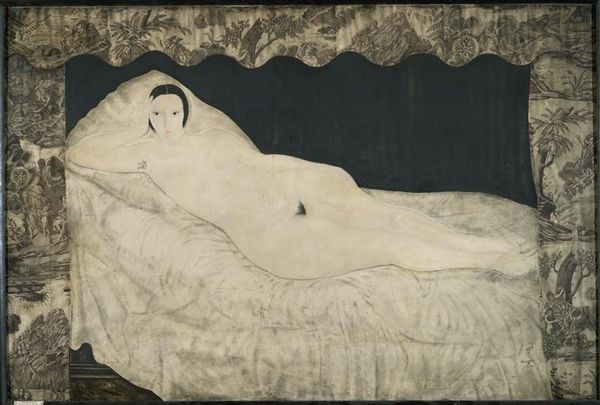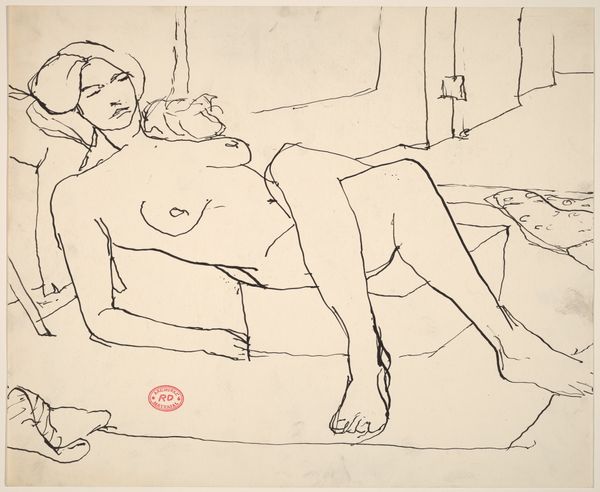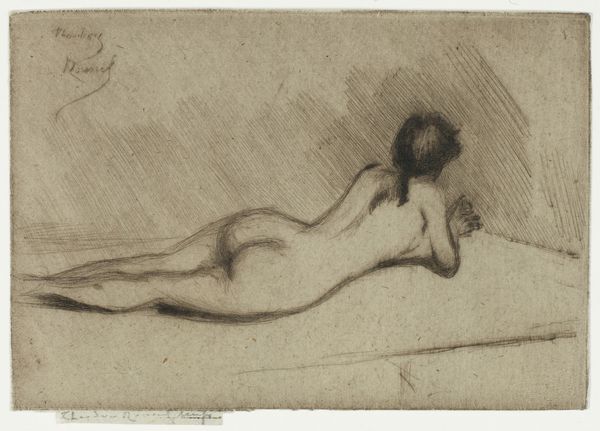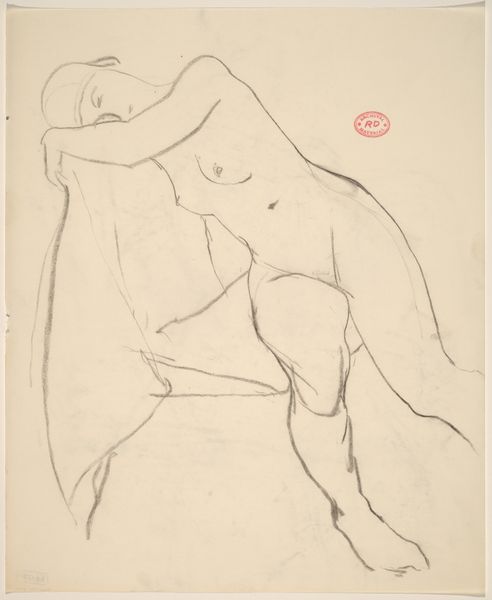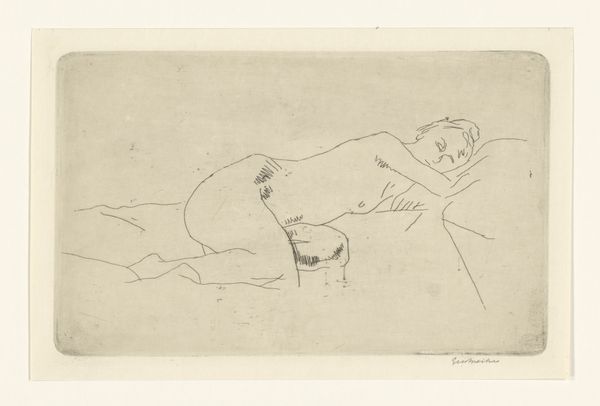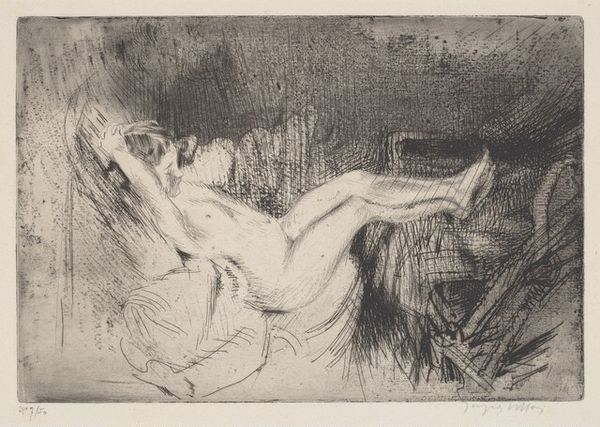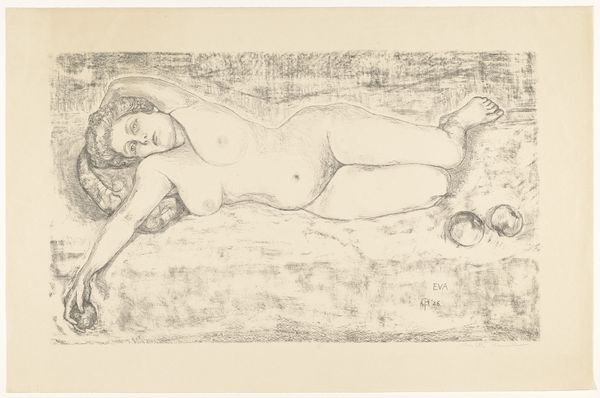
print, linocut
# print
#
linocut
#
figuration
#
linocut print
#
genre-painting
#
nude
#
modernism
Copyright: National Gallery of Art: CC0 1.0
Editor: We're looking at "Danae" by Hideo Hagiwara, a linocut print. The stark contrast and the graphic quality give it a modern feel, despite the classical subject matter. I’m interested in the relationship between the nude figure and the heavily patterned background. What do you see in this piece? Curator: I see a conscious negotiation of artistic labor. Hagiwara’s choice of linocut—a relatively inexpensive and accessible medium—pushes back against the preciousness often associated with "high art." Consider the labor involved in carving the intricate patterns and the figure itself, a repetitive, almost industrial process when compared to, say, oil painting. Editor: That’s interesting! So, the *process* is just as important as the image? Curator: Absolutely. The linocut as a *multiple*, produced in an edition, also brings up issues of value and accessibility, challenging the notion of the unique, original artwork and its relationship to commodity culture. The fact it is a print influences the production and therefore the art object’s overall social position. Editor: And the patterns? Do they also speak to that accessibility? Curator: Yes. The patterned wallpaper flattens the space, drawing attention to the surface of the print and away from any illusionistic depth. We're not meant to be fooled into thinking this is a window onto another world; we’re meant to see it as a constructed object, an artifact of labor and design. Editor: I see, it is so intriguing how the material dictates meaning in some ways! Thank you. Curator: My pleasure. The conversation reminds us that art doesn't exist in a vacuum but within the world of making, markets, and materiality.
Comments
No comments
Be the first to comment and join the conversation on the ultimate creative platform.

